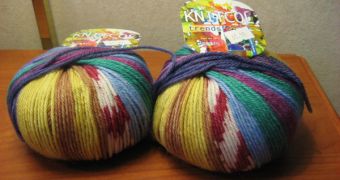Synaesthesia is a very rare condition, having as main feature the fact that it triggers strong emotions in people who have it, when they touch various objects. For instance, while some fabrics, such as cotton and silk, may be a source of happiness and positive feelings, denim can trigger hate or anguish. There are several forms of this rare disease, including the association of letters and numbers with colors, of shapes with taste, and of colors with perfumes.
People who experience these symptoms are, doctors say, under the influence of an increased amount of positive feelings related to a specific sight or object, which all humans have, only in smaller quantities. We all get a special feeling when watching a color, for example, and people always associate red with passion, green with tranquility and gray with coldness. Such is the case with synaesthesia, where senses combine to give the people suffering from it a broader sense of their surroundings.
"We have an affinity for fur because when we were evolving in the ice age, we needed coats. This is the architecture on which tactile-emotion synaesthesia is built," explains University of California neuroscientist, V. S. Ramachandran. Strong feelings are associated with touch in this form of the condition, and the two tested in the research made it abundantly clear that the way they felt about a certain texture, either disgust or joy, was uncontrollable.
"Whatever is going on with these synaesthetes, it seems to be an example of the normal mechanisms that are present in all of us. It's the sort of randomness that gets wiped out, trained way, overwhelmed by learning and cultural factors," adds Cornell University neuroscientist, Edward Hubbard, referring to the fact that recent discoveries point at weird wiring patterns in the brain, in the case of those with synaesthesia.
In other words, there are excessive numbers of neurons linking two various parts of the brain, as in, for instance, that responsible for operating numbers and the one that usually detects color. Every form of the condition is triggered by such neural abundance between brain regions. However, doctors say that there is no reason to panic, as the condition is not degenerative, nor deadly, and that people suffering from it will only experience reluctance to touch a certain fabric, or see a specific color.

 14 DAY TRIAL //
14 DAY TRIAL //